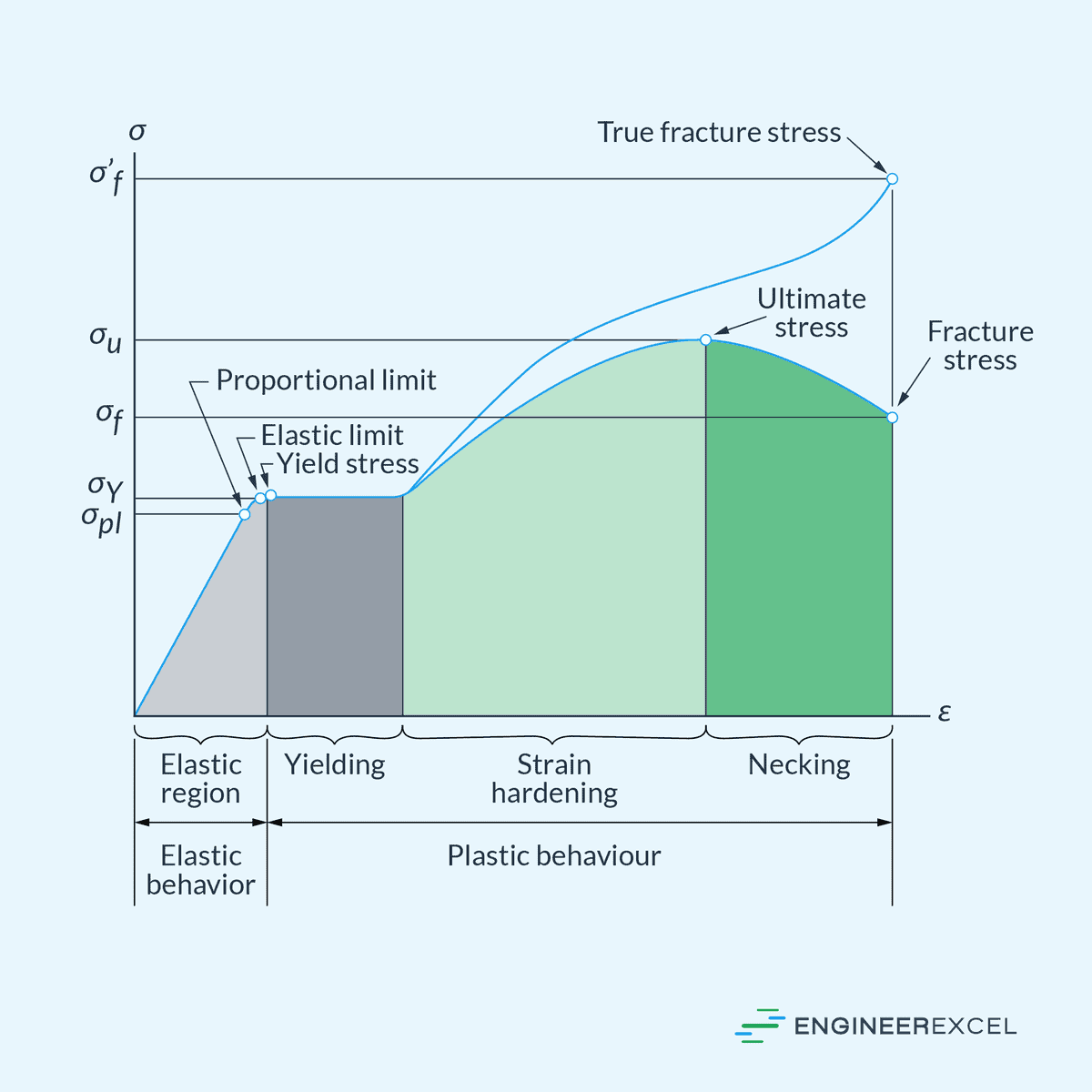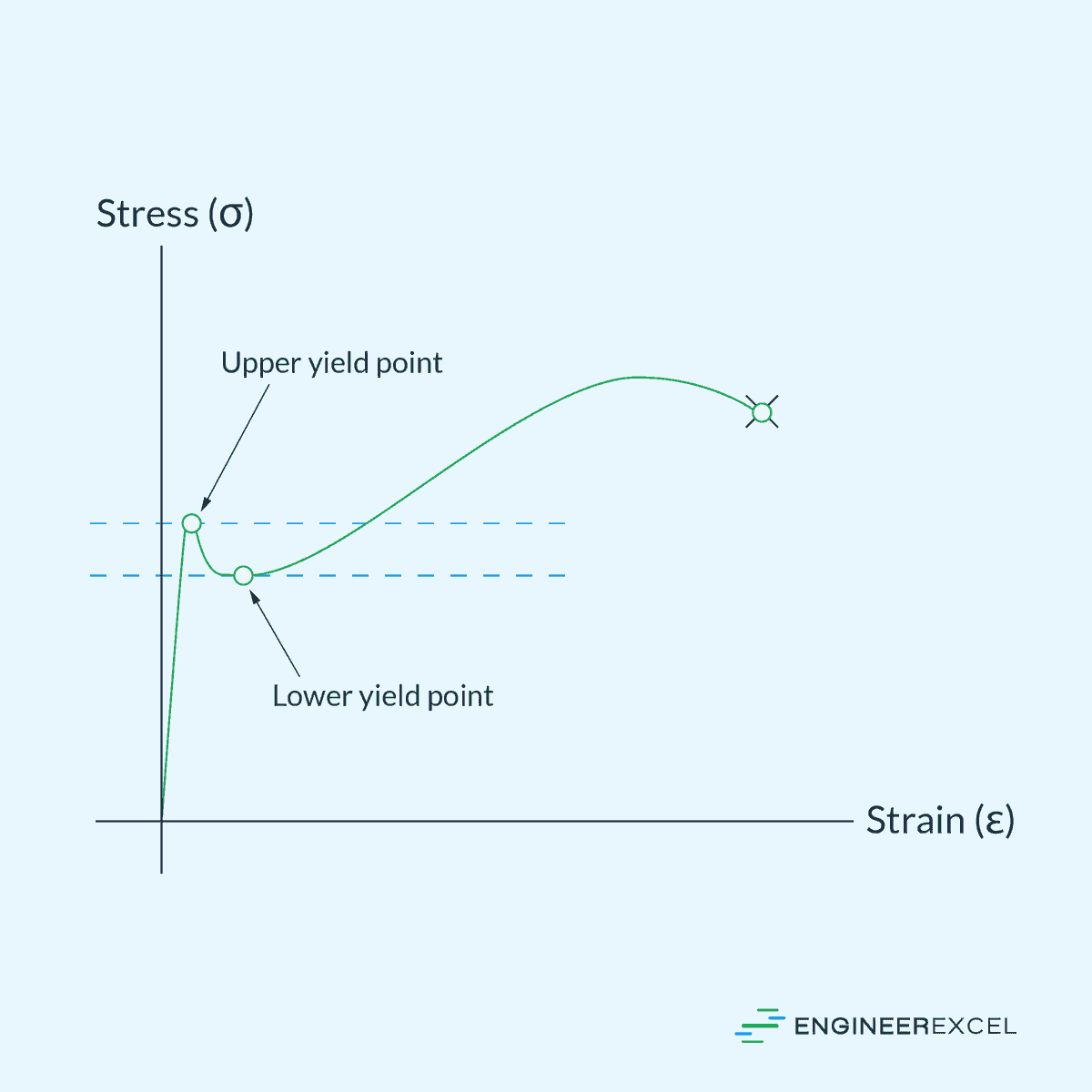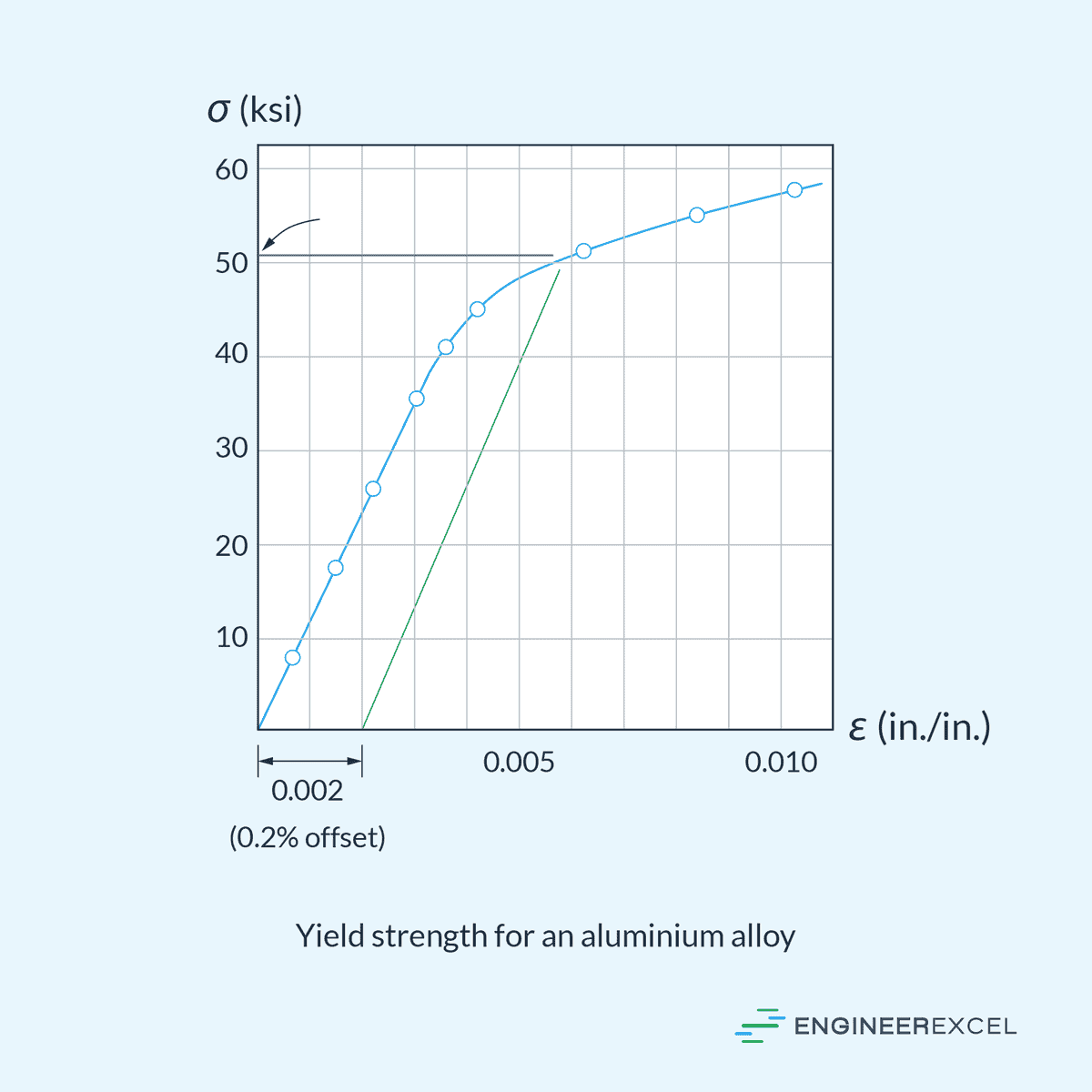Yield strength is the amount of stress a material can withstand before it begins to deform permanently. It represents the maximum stress a material can undergo without experiencing plastic deformation. In this article, we will explore the concept of yield strength, its measurement techniques, factors influencing it, and its variations across different materials
Understanding Yield Strength
Yield strength is a fundamental property that represents the stress level at the yield point of a material. At this point, the material begins to deform permanently, marking the transition from elastic to plastic deformation. To grasp this concept, it’s essential to understand the behavior of materials under stress and how they deform.
When a force is applied to a material, it induces stress, which is the force exerted per unit area. This stress results in strain, a measure of the material’s deformation, defined as the change in dimension relative to the material’s original dimension.
Initially, materials exhibit elastic deformation; they stretch or compress and can return to their original shape once the stress is removed. This phase is characterized by a linear relationship between stress and strain, where the material’s response follows Hooke’s Law up to the proportional limit:


Elevate Your Engineering With Excel
Advance in Excel with engineering-focused training that equips you with the skills to streamline projects and accelerate your career.
Where:
- σ = stress [Pa]
- E = modulus of elasticity [Pa]
- ε = strain [unitless]
The modulus of elasticity, also known as Young’s modulus, is the slope of this initial linear region in the stress-strain diagram, indicating the material’s stiffness and ability to resist deformation.

As the load increases, the material will continue to deform elastically until it reaches the elastic limit. In most materials, the yield strength and the elastic limit have almost equal value and often considered the same. However, they are technically distinct.
The elastic limit is the threshold of elastic behavior, while the yield strength marks the onset of plastic deformation. The region between these points is known as the elastoplastic region, where the material exhibits both elastic and plastic behavior. This means that if a material is loaded up to its elastoplastic region, it will not fully recover its deformation upon unloading.
It’s also important to recognize that some materials exhibit both an upper and a lower yield point, as shown in the diagram below.

The upper yield point represents the maximum stress level at which plastic deformation begins, typically due to the movement of dislocations or slips within the material’s structure. As slipping occurs, the material offers less resistance, leading to a slight drop in the stress-strain curve, until it reaches the lower yield point. The lower yield point is the minimum stress required to continue the plastic deformation.
Furthermore, not all materials have a clear, distinct yield point. Aluminum, whose stress-strain diagram is shown below, is one example.

For such materials, the 0.2% Offset Method is employed to determine yield strength. This approach involves drawing a line from a 0.2% strain value parallel to the elastic portion of the stress-strain curve. The intersection of this line with the curve defines the yield strength.
It is important to note that yield strength varies depending on the type of stress applied: tensile, compressive, or shear. In general, shear yield strength is lower than both tensile and compressive yield strength.
Factors Affecting Yield Strength
Yield strength is influenced by various factors such as material composition, temperature, and mechanical processing.
Material Composition
Material composition has a significant impact on yield strength. Alloying, which is the process of adding other elements to a base metal, can result in solid solution strengthening or the formation of a second phase, both of which can enhance yield strength. For example, adding carbon to iron increases its yield strength by forming harder steel through the creation of iron carbide precipitates that obstruct dislocation motion.
Temperature
As the temperature increases, the yield strength typically decreases due to the thermal activation of dislocation movements, making materials more ductile. Conversely, at low temperatures, materials can become more brittle and exhibit a higher yield strength. The specific temperature at which these changes occur varies based on the material’s inherent properties.
Work Hardening and Heat Treatment Processes
Work hardening and heat treatment processes also affect yield strength. Work hardening occurs when a material is deformed plastically, causing dislocation density to increase, which in turn enhances its yield strength. Processes such as cold rolling are commonly employed to induce work hardening.
Heat treatment, including annealing, quenching, and tempering, can alter a material’s microstructure, resulting in significant changes in yield strength. Precise control of these processes allows engineers to tailor the yield strength to specific applications. For instance, quenching steel increases its yield strength through the formation of a martensitic phase, while subsequent tempering can reduce its brittleness.
Measurement of Yield Strength
The primary technique for measuring yield strength involves applying a load to a test specimen until it reaches its yield point, which is the stage at which plastic deformation begins. This point is characterized by a noticeable deformation of the material that occurs without any additional increase in load.
To ensure accurate and standardized results, the test piece is typically machined to specific dimensions and shapes. For tensile yield strength measurement, for example, standardized testing methods such as ASTM E8 are employed.
During the test, the load is increased gradually, and the elongation of the specimen’s gauge length is recorded—often automatically by the testing equipment. This equipment must be capable of applying loads and measuring displacement with high precision.
In instances where the material exhibits a clearly discernible yield point, this is indicated by a discontinuity on the stress-strain curve, often manifested as a yielding plateau. However, when a material does not display a distinct yield point, the yield strength is approximated by drawing a line parallel to the initial, linear portion of the stress-strain curve, starting at a small, predefined strain (usually 0.2%). The yield strength is defined by the point where this offset line intersects the curve.
Yield Strength in Different Materials
Yield strength varies widely among different materials, reflecting their diverse applications and mechanical properties. Metals such as steel have high yield strengths, often ranging from 250 MPa for mild steel to over 1400 MPa for high-strength alloys, making them suitable for structural applications and heavy loads. Aluminum alloys exhibit lower yield strengths, typically between 70 MPa to 700 MPa, which is compensated by their lower density and higher corrosion resistance for use in aerospace and automotive industries.
Polymers, on the other hand, generally have much lower yield strengths than metals; for example, polyethylene can have a yield strength as low as 20 MPa, which limits their use to applications where less mechanical stress is applied. Ceramic materials, while extremely hard and brittle, can display high yield strengths in compression—up to 2000 MPa for some ceramics—but they are not typically characterized by yield strength in tension due to their brittle nature. Composites, such as carbon fiber reinforced polymers, can achieve yield strengths comparable to metals, up to 1600 MPa, and are chosen for their high strength-to-weight ratios in high-performance applications.
